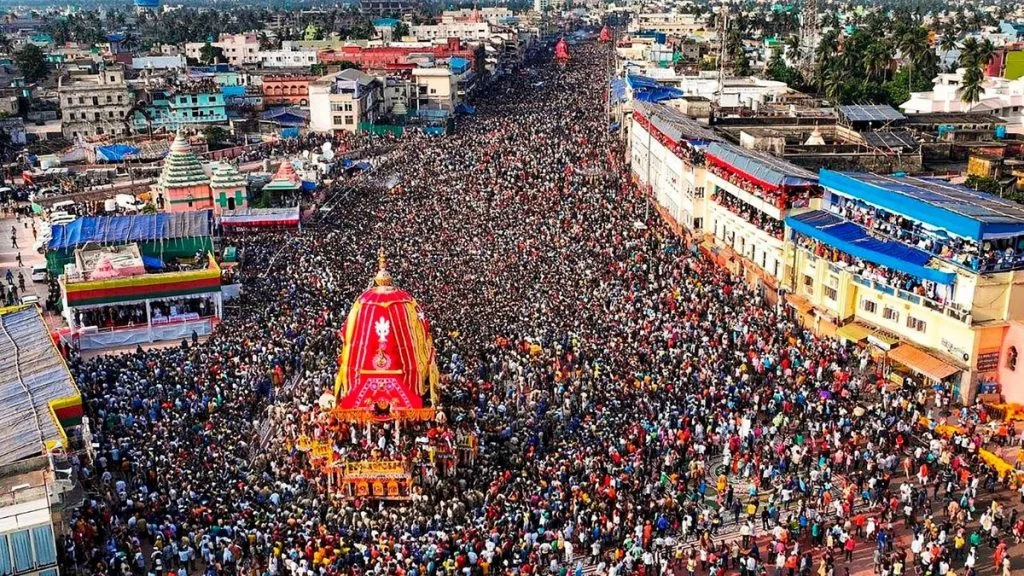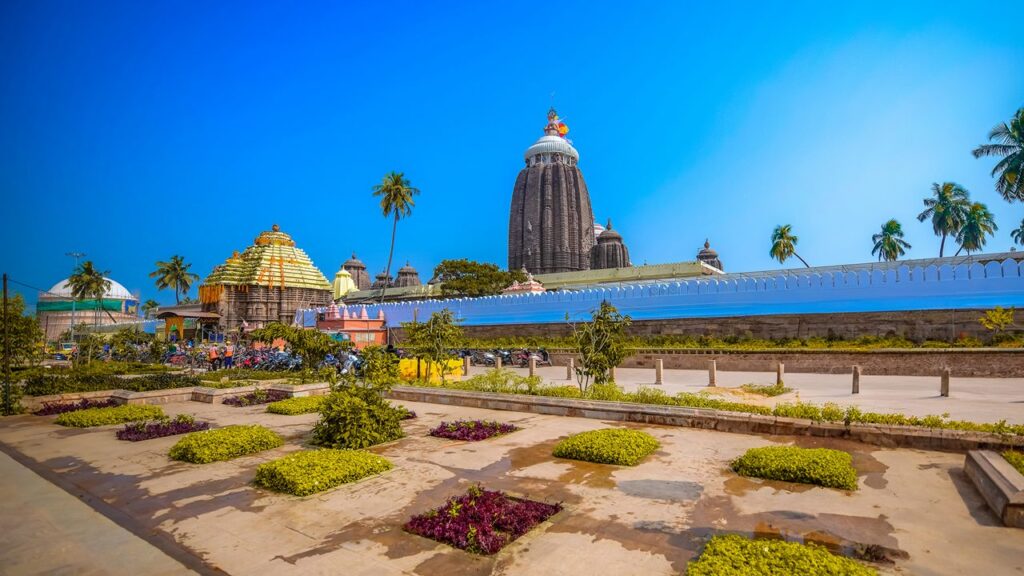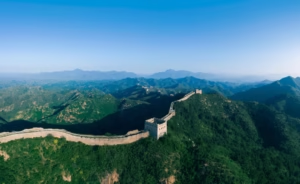Jagannath Temple: Legacy of Faith, Culture and Unity

The Jagannath Temple in Puri, Odisha, is not just a religious site—it is a confluence of history, architecture, cultural richness, and spiritual diversity. Revered by millions, it is one of the most important pilgrimage sites in India and forms a part of the Char Dham Yatra, which includes Badrinath, Rameshwaram, and Dwarka.
History of the Jagannath Temple
The history of the Jagannath Temple is deeply rooted in mythology and documented evidence. According to legend, the original image of Jagannath was found in the form of an Indranila Mani (blue jewel) by a tribal king, Viswavasu. Lord Vishnu instructed King Indradyumna of Malwa to build a temple for Lord Jagannath, and this led to the construction of the great temple at Puri.
Historically, the temple was built in the 12th century CE by King Anantavarman Chodaganga Deva, a ruler of the Eastern Ganga dynasty. It was later expanded and renovated by subsequent rulers, especially King Ananga Bhima Deva III, who is credited with completing the present structure and installing the deities in the sanctum.
Over the centuries, the temple survived multiple invasions and attempts at desecration, especially during the Muslim invasions. Despite political turmoil, the devotion of the people of Odisha and the temple priests ensured that the traditions and the sacredness of the temple were preserved.
Architectural Marvel
The Jagannath Temple is a prime example of Kalinga architecture, a style that flourished in ancient Odisha. The temple complex is spread over 400,000 square feet and is surrounded by a high fortified wall called the Meghanada Pacheri.
Main Structures
- Vimana (Sanctum Sanctorum): Towering at about 214 feet, it houses the main deities—Lord Jagannath, Balabhadra, and Subhadra.
- Jagamohana (Audience Hall): This is where devotees gather to catch a glimpse of the deities.
- Nata Mandir (Dancing Hall): Used for religious dances and rituals.
- Bhoga Mandap (Offerings Hall): Where food offerings are made to the deities.
Each of these structures is aligned on a straight axis, showcasing architectural brilliance. The entire temple complex includes over 120 shrines and smaller temples.
Unique Features
- The temple’s shadow reportedly never falls on the ground at noon—a phenomenon yet to be fully explained.
- The flag atop the temple always flutters in the opposite direction of the wind.
- The temple kitchen is one of the largest in the world, feeding thousands daily using traditional clay pots and wood fire.
https://sypertimes.com/kedarnath-temple-a-sacred-jewel-in-the-himalayas/
Diversity and Inclusiveness
The Jagannath Temple is a symbol of unity in diversity. Unlike other temples where only certain groups may enter or worship, Lord Jagannath is regarded as “Patitapabana”—the savior of the fallen. His form is symbolic: a deity without clearly defined arms or legs, representing inclusivity and formlessness.
Though non-Hindus are not allowed inside the temple, the Rath Yatra (Chariot Festival) allows everyone—regardless of caste, creed, or nationality—to have darshan (holy view) of the deities as they are brought out into the open on grand chariots
.
Cultural Significance and Festivals
The cultural life of Odisha and much of eastern India revolves around Jagannath Temple. The temple is not only a religious institution but also a center of art, music, dance, and literature.
Rath Yatra: The Festival of Chariots
The annual Rath Yatra is the most famous festival associated with the temple. Held during the month of Ashadha (June-July), it sees the deities placed on enormous, ornately decorated chariots and pulled through the streets by thousands of devotees. The sight of these massive wooden chariots rolling through Puri’s Grand Road is one of the most iconic spiritual events in the world.

Other Important Festivals
- Snana Yatra: The ritual bathing of deities.
- Nabakalebara: Occurs once every 12 to 19 years when the wooden idols are replaced.
- Chandan Yatra: A 42-day festival involving the floating of idols on boats.
These festivals reflect deep-rooted traditions and emphasize the cyclical nature of time and devotion.
Traditions and Rituals
The Jagannath Temple follows a highly detailed and sacred set of rituals that span the entire day:
- Mangala Aarti (early morning ritual)
- Abakasha (bathing of deities)
- Sakala Dhupa (morning food offering)
- Madhyana Dhupa (afternoon offering)
- Sandhya Dhupa (evening offering)
- Pahuda (night rituals)
The most fascinating part is the Mahaprasad—food offered to the deities, which is later distributed to devotees. It is prepared in the temple kitchen using age-old methods and is considered sacred.
Another important tradition is the changing of the flag on the temple spire every evening, a dangerous ritual that is performed daily by a temple priest who climbs up without any safety gear.

The Deities and Symbolism
Lord Jagannath is considered a form of Lord Vishnu or Krishna. His unusual form—with large round eyes and a carved wooden face—is shared with his siblings, Balabhadra and Subhadra. These wooden idols are renewed periodically, unlike stone deities in other temples, signifying rebirth and continuity.
The idols are made from sacred neem trees called Daru Brahma, and the entire process of their renewal, called Nabakalebara, is filled with secret rituals performed by selected priests
Conclusion
The Jagannath Temple stands not only as a spiritual beacon but also as a living heritage site that has thrived through time. It blends myth and reality, art and devotion, architecture and faith. It is a reminder of India’s pluralism, cultural depth, and eternal spiritual quest.
From its towering spire to its massive chariots, from its age-old kitchen to its deeply symbolic deities, the temple offers a journey into a world where the divine meets the everyday. It remains a place where faith transcends barriers, and tradition shapes identity—a true marvel of human devotion and architectural genius.




